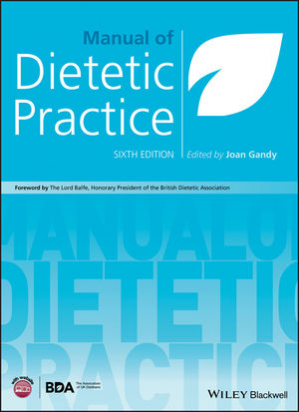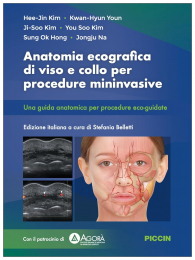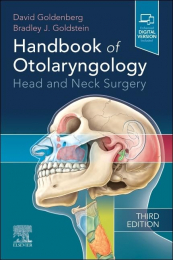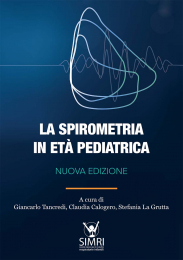Contributors xi
Foreword xvi
Preface xvii
About the companion website xviii
Part 1 General topics 1
Section 1 Dietetic practice 3
1.1 Professional practice 5
1.2 Dietary modification 18
1.3 Changing health behaviour 23
Section 2 Nutritional status 37
2.1 Dietary reference values and food‐based dietary guidelines 39
2.2 Assessment of nutritional status 46
2.3 Dietary assessment 63
2.4 Food composition tables and databases 70
Section 3 Nutrition in specific groups 77
3.1 Women’s health 79
3.1.1 Polycystic ovary syndrome 79
3.1.2 Premenstrual syndrome 82
3.1.3 Menopause 85
3.2 Preconception and pregnancy 88
3.3 Older adults 96
3.4 People in low‐income groups 108
3.5 Working with minority ethnic groups 116
3.6 Vegetarianism and vegan diets 129
3.7 People with learning disabilities 140
3.8 Paediatric clinical dietetics and childhood nutrition 158
3.8.1 Introduction 158
3.8.2 Growth, nutritional assessment and nutritional requirements 159
3.8.3 Growth faltering 169
3.8.4 Nutritional care of the preterm infant 176
3.8.5 Community paediatric dietetics 179
3.8.6 Autism 180
3.8.7 Special needs 181
3.8.8 Paediatric general medicine 183
3.8.9 Paediatric oral nutritional support 184
3.8.10 Paediatric enteral tube nutrition 185
3.8.11 Paediatric parenteral nutrition 189
3.8.12 Paediatric gastroenterology 192
3.8.13 Cystic fibrosis 194
3.8.14 Paediatric liver disease 196
3.8.15 Paediatric nephrology 197
3.8.16 Neurology and the ketogenic diet 199
3.8.17 Inherited metabolic disorders 200
3.8.18 Paediatric food hypersensitivity 202
3.8.19 Paediatric human immunodeficiency virus 205
3.8.20 Paediatric diabetes 206
3.8.21 Cardiology 208
3.8.22 Paediatric cancers 210
3.8.23 Nutrition support in the critically ill child 212
3.8.24 Paediatric haematopoietic stem cell and bone marrow transplantation 215
3.8.25 Neurosurgery 216
3.8.26 Burns 219
3.8.27 General surgery 221
Section 4 Specific areas of dietetic practice 223
4.1 Freelance dietetics 225
4.2 Public health nutrition 233
4.3 Sports nutrition 252
4.4 Food service 260
4.4.1 Food service in hospitals and institutions 260
4.4.2 Prisons 270
4.4.3 Armed Forces 272
4.5 Food law and labelling 274
Section 5 Other topics related to practice 287
5.1 Genetics and nutritional genomics 289
5.2 Functional foods 298
5.3 Medicines management 303
5.4 Alternative and complementary therapies 311
Part 2 Clinical dietetic practice 319
Section 6 Nutrition support 321
6.1 Nutritional requirements in clinical practice 323
6.2 Malnutrition 332
6.3 Oral nutritional support 343
6.4 Enteral nutrition 351
6.5 Parenteral nutrition 364
6.6 Fluids and electrolytes 371
Section 7 Clinical dietetic practice 379
7.1 Respiratory disease 381
7.2 Dental disorders 391
7.3 Dysphagia 397
7.4 Gastrointestinal disorders 406
7.4.1 Disorders of the upper aerodigestive tract 406
7.4.2 Orofacial granulomatosis 407
7.4.3 Disorders of the stomach and duodenum 411
7.4.4 Gastroparesis 415
7.4.5 Disorders of the pancreas 421
7.4.6 Malabsorption 426
7.4.7 Coeliac disease 432
7.4.8 Inflammatory bowel disease 446
7.4.9 Intestinal failure and intestinal reSection 454
7.4.10 Irritable bowel syndrome 464
7.4.11 Other disorders of the colon and rectum 470
7.4.12 Liver and biliary disease 478
7.4.13 Cystic fibrosis 505
7.5 Renal disorders 518
7.5.1 Chronic kidney disease and acute kidney injury 518
7.5.2 Kidney stones 545
7.6 Neurological disease 554
7.6.1 Parkinson’s disease 554
7.6.2 Motor neurone disease 561
7.6.3 Rare neurological conditions 569
7.6.4 Multiple sclerosis 577
7.6.5 Chronic fatigue syndrome/myalgic encephalomyelitis 581
7.6.6 Neurorehabilitation 587
7.7 Refsum’s disease 595
7.8 Inherited metabolic disorders in adults 600
7.9 Musculoskeletal disorders 612
7.9.1 Osteoporosis 612
7.9.2 Arthritis 622
7.9.3 Gout 629
7.10 Mental health 633
7.10.1 Nutrition and mental health 633
7.10.2 Eating disorders 644
7.10.3 Dementias 656
7.11 Immunology and immune disease 663
7.11.1 Nutrition and immunity 663
7.11.2 Food hypersensitivity 668
7.11.3 Human immunodeficiency virus (HIV) 700
7.12 Diabetes mellitus 715
7.13 Obesity 731
7.13.1 General aspects and prevention of obesity 731
7.13.2 The management of obesity and overweight in adults 739
7.13.3 Bariatric surgery 751
7.13.4 Childhood obesity 755
7.14 Cardiovascular disease 761
7.14.1 General aspects of cardiovascular disease 761
7.14.2 Coronary heart disease 770
7.14.3 Dyslipidaemia 783
7.14.4 Hypertension 794
7.14.5 Stroke 803
7.15 Cancer 811
7.15.1 General aspects of cancer 811
7.15.2 Head and neck cancer 822
7.15.3 Cancer of the gastrointestinal tract 834
7.15.4 Breast cancer 842
7.15.5 Lung cancer 846
7.15.6 Gynaecological cancers 849
7.15.7 Prostate cancer 853
7.15.8 Haematological cancers and high‐dose therapy 857
7.15.9 Cancer cachexia 864
7.16 Palliative and end‐of‐life care 869
7.17 Trauma and critical care 875
7.17.1 Critical care 875
7.17.2 Traumatic brain injury 888
7.17.3 Spinal cord injury 898
7.17.4 Burn injury 905
7.17.5 Surgery 912
7.17.6 Wound healing, tissue viability and pressure sores 921
Appendices
Appendix A1 Dietary reference values 927
Appendix A2 Dietary data 931
Appendix A3 Anthropometric and function data 934
Appendix A4 Predicting energy requirements 938
Appendix A5 Clinical chemistry 939
Appendix A6 Nutritional supplements and enteral feeds 941
Appendix A7 Nutrition screening tools 955
Index 961





